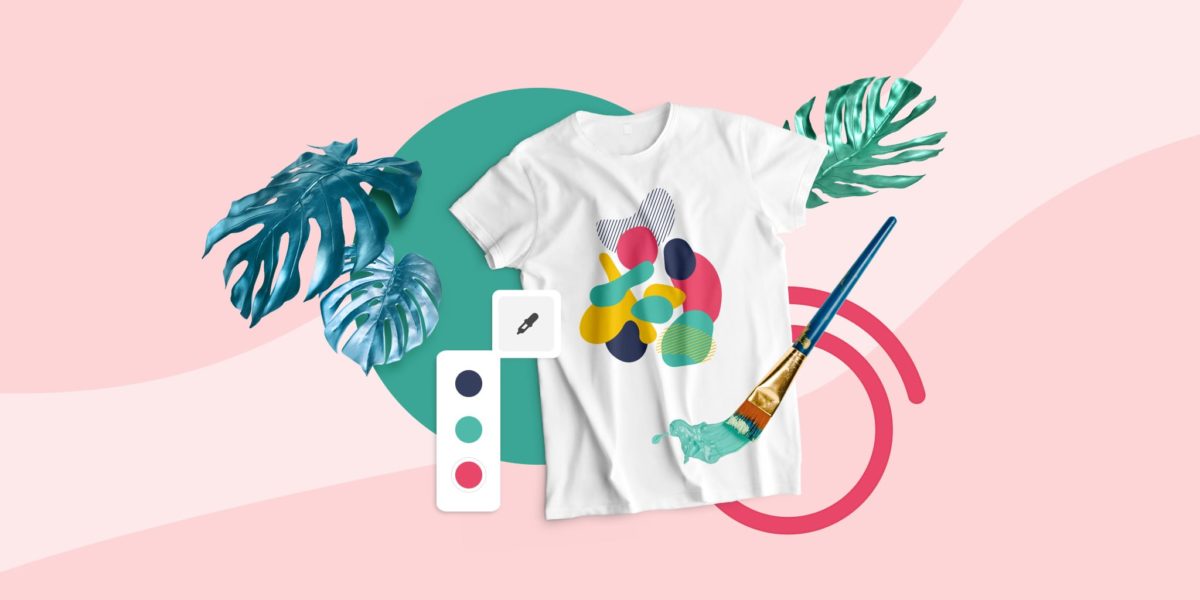
The custom t-shirt design and printing profession has been rising as a promising career in the 21st century. Many people are joining the club and becoming t-shirt designers to have an essential source of income. However, some people may hesitate to become custom t-shirt designers because they need more experience when it comes to coordinating colors.
Therefore, in this article, we will provide the most important guidelines to be followed regarding the colors used in the design and printing of custom t-shirts.
What role do harmonious colors play in boosting earnings and sales?
The importance of color selection comes from the fact that colors can interact effectively with the purpose and message of a design. For instance, a shirt’s fabric and printing may be of high quality, but if the colors are inconsistent and do not support the design concept, the choice will negatively impact sales and may even result in losses.
Is there a way to understand color matching when designing custom t-shirts?
Undoubtedly, coordinating colors with each other is the first thing designers of custom shirts do. Beginners, in specific, strive to ensure their choices attract consumers’ attention and make their designs highly favorable among others.
Therefore, it is necessary to become familiar with the so-called color wheel, as it is an easy way to use for beginners; it helps to choose the optimal colors consistently.
The color wheel contains three primary colors, yellow, blue, and red, and three secondary colors that arise from the primary colors, green, orange, and purple. The six tertiary colors emerge by mixing a primary with a secondary color.
How can the color wheel be used when designing custom t-shirts?
Understanding the fundamentals of dealing with colors is essential if a designer wants to come up with the most innovative ideas while creating custom t-shirts. Therefore, the color wheel is divided into three groups, which are:
Warm colors
This group includes red, orange, and yellow. These colors are considered trendy, as many customers prefer to buy custom t-shirts in these colors because they give a feeling of happiness and joy. It is also one of the most sensitive colors in printing, so its shades should be chosen carefully.
Cool colors
This set includes green, purple, and blue. These colors are usually used to show calm, comfort, and relaxation; they can be used as a base color for a custom shirt.
Neutral colors
This set of colors does not belong to the color wheel, including black, gray, and white. These colors are usually used as backgrounds in the design, strengthening the other colors used.
Why do printed colors look different from digital designs?
Understanding the reasons why printed colors differ from their digital colors requires learning a few concepts from the field of color matching, which are:
RGB
RGB is a color model which consists of three primary colors, Red(R), Green(G), and Blue(B), as It depends on the way we see these colors with the help of light. The presence of these colors together in their full intensity gives white, while their absence gives black. This model is usually used in optical projectors of various kinds.
CMYK
CMYK is also a color model which consists of four primary colors, which are Cyan(C), Magenta(M), Yellow(Y), and the black key (Key). In contrast to the RGB model, where the absence of color gives a black color, therefore the model is designed to work on a black background.
While the CMYK model is designed so that the absence of color is white, most light colors can be produced by mixing CMYK percentages. This model is usually used in most printers.
The reason behind color differences
As mentioned earlier, monitors and projectors use the RGB color model, which typically supports a lot of colors. In contrast, printers use the CMYK color model to reproduce most colors in the RGB color model. Depending on the software used, CMYK generally matches 85-90% of the colors in the RGB model.
However, some design software supports only the RGB color space, while other advanced design software supports the CMYK color space and allows switching between RGB and CMYK color spaces.
Therefore, if the designer works within the RGB color space and the colors used are outside the RGB gamut, or the software program used in the design does not support the CMYK gamut, the designer will not get the desired result.
Fabrics also play a role in changing color when printing due to the difference in the color absorbent fabric. For example, a fabric made of 100% cotton has a very tight weave. For this reason, it is the best choice for showing the design in its true colors because this narrow fabric absorbs 100% of the ink, whereas the fabric, which is 50 %cotton and 50%polyester, has a wider weave, so it will not absorb ink well.
In summary
The importance of custom t-shirt design is on par with other professions due to the rapidly increasing demand for these outfits, so the ability to design custom t-shirts in consistent colors and of high quality is the key to the success of any design.
